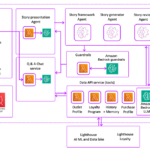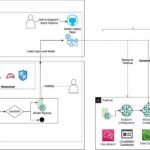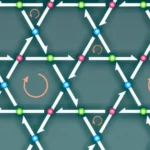Unlike birds, which navigate unknown environments with remarkable speed and agility, drones typically rely on external guidance or pre-mapped routes. However, a groundbreaking development by Professor Fu Zhang and researchers from the Department of Mechanical Engineering of Faculty of Engineering at the University of Hong Kong (HKU), has enabled drones and micro air vehicles (MAVs) to emulate the flight capabilities of birds more closely than ever before.
The team has developed the Safety-Assured High-Speed Aerial Robot (SUPER), capable of flying at speeds exceeding 20 meters per second and avoiding obstacles as thin as 2.5 millimeters – such as power lines or twigs – using solely on onboard sensors and computing power. With a compact design featuring a wheelbase of just 280 mm and a takeoff weight of 1.5 kg, SUPER demonstrates exceptional agility, navigating dense forests at night and skillfully avoiding thin wires.
Professor Zhang describes this invention as a game-changer in the field of drone technology, “Picture a ‘Robot Bird’ swiftly maneuvering through the forest, effortlessly dodging branches and obstacles at high speeds. This is a significant step forward in autonomous flight technology. Our system allows MAVs to navigate complex environments at high speeds with a level of safety previously unattainable. It’s like giving the drone the reflexes of a bird, enabling it to dodge obstacles in real-time while racing toward its goal.”
The breakthrough lies in the sophisticated integration of hardware and software. SUPER utilizes a lightweight 3D light detection and ranging (LIDAR) sensor capable of detecting obstacles up to 70 meters away with pinpoint accuracy. This is paired with an advanced planning framework that generates two trajectories during flight: one that optimizing speed by venturing into unknown spaces and another prioritizing safety by remaining within known, obstacle-free zones.
By processing LIDAR data directly as point clouds, the system significantly reduces computation time, enabling rapid decision-making even at high velocities. The technology has been tested in various real-life applications, such as the autonomous exploration of ancient sites, and has demonstrated seamless navigation in both indoor and outdoor environments.
“The ability to avoid thin obstacles and navigate tight spaces opens up new possibilities for applications like search and rescue, where every second counts. SUPER’s robustness in various lighting conditions, including nighttime, makes it a reliable tool for round-the-clock operations.” said Mr Yunfan Ren, the lead author of the research paper.
The research team envisions a wide range of applications for this innovative technology, including autonomous delivery, power line inspection, forest monitoring, autonomous exploration, and mapping. In search and rescue missions, MAVs equipped with SUPER technology could swiftly navigate disaster zones – such as collapsed buildings or dense forests – day and night, locating survivors or assessing hazards more efficiently than current drones. Moreover, in disaster relief scenarios, they could deliver crucial supplies to remote and inaccessible areas.
Artificial Intelligence; Robotics; Information Technology; Computer Science; Computers and Internet; Distributed Computing; Internet; Educational Technology











